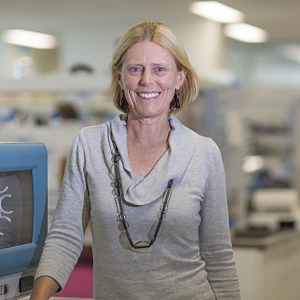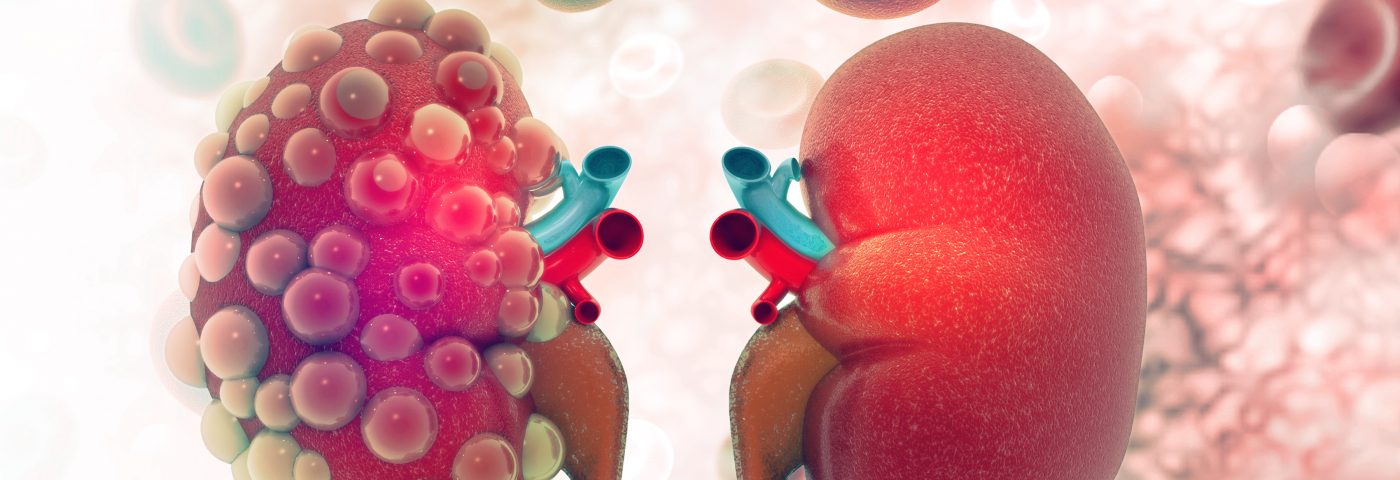So-called “mini-kidneys,” or kidney organoids, grown in the lab with pluripotent stem cells are providing with scientists a new way to model diseases and test drugs, including for chronic kidney disease (CKD). Recently, Melissa Little, PhD, with the Murdoch Children’s Research Institute in Melbourne, Australia, presented data about these organoids’ potential at the European Society of Gene and Cell Therapy (ESGCT) 2016 Annual Congress held in Florence, Italy.
Induced pluripotent stem (iPS) cells from patients are adult cells that have been reprogrammed to an embryonic stem cell-like state that can differentiate into any type of cell, including kidney cells, and may eventually be a source for lab-grown cell-based transplants.
 “In the long term, we might be able to partially repair an organ and functionally replace or totally replace kidneys,” Little said. “For now, there are limitations to what we can do.”
“In the long term, we might be able to partially repair an organ and functionally replace or totally replace kidneys,” Little said. “For now, there are limitations to what we can do.”
Little, in a medical news article by Ingrid Hein, also said that she and her research team have been growing kidney organoids in Petri dishes to study kidney disease. “This is a tiny model of an early-development tissue. These are not a 70-year-old kidneys going into chronic kidney disease.”
By comparing organoids from a child developing kidney failure to organoids grown from a close relative’s cells, the researchers can model this inherited disease. “We now know more about which genes cause these diseases,” she said.
One major challenge confronting researchers is discovering how to grow larger kidney organoids with more nephrons, as the ones Little’s team is currently growing are about 6 mm long and contain about 100 nephrons (a human kidney has as many as 2 million nephrons, structures that produce urine to remove wastes and other substances).
In an article published in the journal Development, “Closing the circle: from organoids back to development,” Little reports research showing that human somatic cells can be reprogrammed to become pluripotent and form any type of cell.
 In the article, Little notes that organogenesis — the development of organs — requires the creation of complex forms from a collection of distinct cell types, all of which come together without a template. Studies on both embryonic organogenesis and postnatal tissue homeostasis and repair have been essential foundations to the field of stem cell biology, opening the door to recreating miniature approximations of human organs — organoids — entirely in vitro. Whether generated from human pluripotent stem cells (PSCs) or human adult epithelial stem cells, she said, these lab-cultured organoids offer new insights into human developmental processes and can also be used to model tissue repair and disease.
In the article, Little notes that organogenesis — the development of organs — requires the creation of complex forms from a collection of distinct cell types, all of which come together without a template. Studies on both embryonic organogenesis and postnatal tissue homeostasis and repair have been essential foundations to the field of stem cell biology, opening the door to recreating miniature approximations of human organs — organoids — entirely in vitro. Whether generated from human pluripotent stem cells (PSCs) or human adult epithelial stem cells, she said, these lab-cultured organoids offer new insights into human developmental processes and can also be used to model tissue repair and disease.
Kidney disease is an inherited disorder in 10 percent to 20 percent of all cases, with the rate closer to 50 percent in children, and the mutations causing the disease are often unknown. Little said her research team has modeled kidney disease in about 12 different families to help determine how genetic or environmental damage progresses as the disease develops. (Because the “mini-kidneys” most resemble kidneys in young children, her work is focused on this patient group.)
For each case, the researchers grow three kidney organoids: one with cells from a child with recessive, early onset kidney failure, and two others serving as controls — a close but unaffected relative, and an unrelated person. Next ,they use gene-editing technology, such as CRISPR (Clustered regularly interspaced short palindromic repeats), to correct the disease-causing gene mutations.
“We use a lot of organoids in our lab, like cortical organoids, to model brain disorders,” Giuseppe Testa, PhD, MD, of the University of Milan, said, observing that different fields of medicine will be able to benefit from organoids in different ways. They also may play an important role in personalized drug testing, he said.
Eventually, scientists may be able to take cells from a patient and grow a kidney from them, Little said in the news article, but that “is a really big challenge … At the moment, we’ve just started to build the tools.”
Sources:
Medscape Medical News
Development
European Society of Gene and Cell Therapy (ESGCT) 2016 Annual Congress

